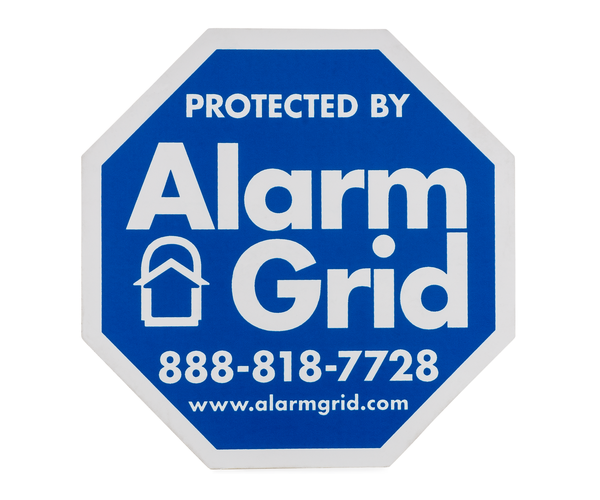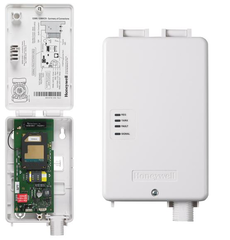Alarm Grid Video Recap: February 12th & 13th
Posted By Michael GorisIt was another productive week for our video team last week, as eight (8) new videos were released on February 12th and 13th. Jorge appeared in the most videos, but fan-favorite Jarrett also showed up. I even appeared in a couple! Let's check out the newest Alarm Grid tutorial videos!

Checking The Simon XT Firmware Version Number
Jorge explains how you can check the Firmware Version Number of an Interlogix Simon XT Security System. The current highest firmware version for the Simon XT is Version 1.6. However, it is particularly important that the system is on at least Firmware Version 1.3. Firmware Version 1.3 is the minimum version needed to install a cellular communicator in the Simon XT Security System so that you can get it connected with Alarm.com for monitoring service.
Using Home Automation on a Qolsys IQ Panel 2 w/o Monitoring
Jorge shows how you can use a Qolsys IQ Panel 2 System for smart home automation functions even if the system is not actively monitored. However, getting the system monitored and connected with Alarm.com will open up the door for many more automation functions. By connecting the system with Alarm.com, you can set up smart scenes to have devices like lights, door locks, and smart thermostats activate automatically based on a set schedule or with certain system events.
Using Honeywell 5800 Sensors On a Qolsys IQ Panel 2
Our good man Jarrett explains how you can use Honeywell 5800 Series Sensors on the 345 MHz version of the Qolsys IQ panel 2 Plus. This version of the system can also support 2GIG 345 MHz Sensors and DSC PowerG Sensors. It is also important to note that you can only use uni-directional (one-way) 345 MHz sensors with the system. You cannot use any bi-directional Honeywell 5800 Sensors with the 345 MHz IQ Panel 2 Plus.
Response Types for a Honeywell Lyric Alarm System
I explain Response Types on a Honeywell Lyric Controller. Every sensor enrolled with the system is assigned a Response Type. This setting determines how the system responds when the sensor is faulted. Making sure you set the correct Response Type for each zone is important. If you set the incorrect Response Type for a zone, then the system won't respond the way you want it to when a sensor is faulted. Keep in mind that difference Response Types are available for different Device Types.
Changing the Volume of a Qolsys IQ Panel 2
Jorge shows you how to adjust the volume on the Qolsys IQ Panel 2 System. The IQ panel 2 has three (3) volume settings available. There are volume settings Voices, Beeps and Chimes, and Media. Each setting can be adjusted individually as needed. You will need to know the Master Code, the Installer Code, or the Dealer Code to make volume changes. Also keep in mind that setting any volume option to 0 will mute that selection.
Enrolling an IQ Fob with a Qolsys IQ Panel 2
Clean-shaven Jarrett shows you how to enroll a Qolsys IQ Fob with a Qolsys IQ Panel 2 System. The Qolsys IQ Fob is a key fob that operates at 319.5 MHz. It offers buttons for arming, disarming, automation, and an auxiliary panic. The actual functions of the buttons are determined based on the sensor group you assign to the key fob zone. The device has a range of about 100 feet, and it works with nearly any security system that supports 319.5 MHz wireless sensors.
Using a Qolsys IQ Panel 2 with Apple HomeKit
Jorge explains how it is not possible to use a Qolsys IQ Panel 2 Plus System with Apple HomeKit. You cannot have HomeKit devices respond automatically based on system events. But the system does offer integrations with Amazon Alexa and Google Home. Also, you can control the system using Siri Shortcuts through Alarm.com. If you need a system that offers full functionality with Apple HomeKit, then we recommend the Honeywell Lyric Controller. The Lyric offers a great HomeKit integration.
Are There Security Systems Better Than a Qolsys IQ Panel Alarm System?
I explain how there are many security systems that are superior to the original Qolsys IQ Panel. The original IQ Panel was the first system released by Qolsys. It has since been replaced by the Qolsys IQ Panel 2 Plus. The Qolsys IQ Panel 2 Plus supports more advanced features, improved automation functions, more reliable communication, and more robust sensor support. It also offers a slimmer design and a sleeker profile, making it more aesthetically pleasing.









 Anyone with a personal phone most likely deals with unwanted incoming spam phone calls, also referred to as "robo calls". This is unfortunately something that Criticom has to manage as well. Unwanted spam calls to a central station represent a true life-safety issue. These incoming calls prevent central station operators from addressing serious alarms and life-threatening emergencies as quickly as possible. Fortunately, CMS has taken steps to address this issue.
Anyone with a personal phone most likely deals with unwanted incoming spam phone calls, also referred to as "robo calls". This is unfortunately something that Criticom has to manage as well. Unwanted spam calls to a central station represent a true life-safety issue. These incoming calls prevent central station operators from addressing serious alarms and life-threatening emergencies as quickly as possible. Fortunately, CMS has taken steps to address this issue.